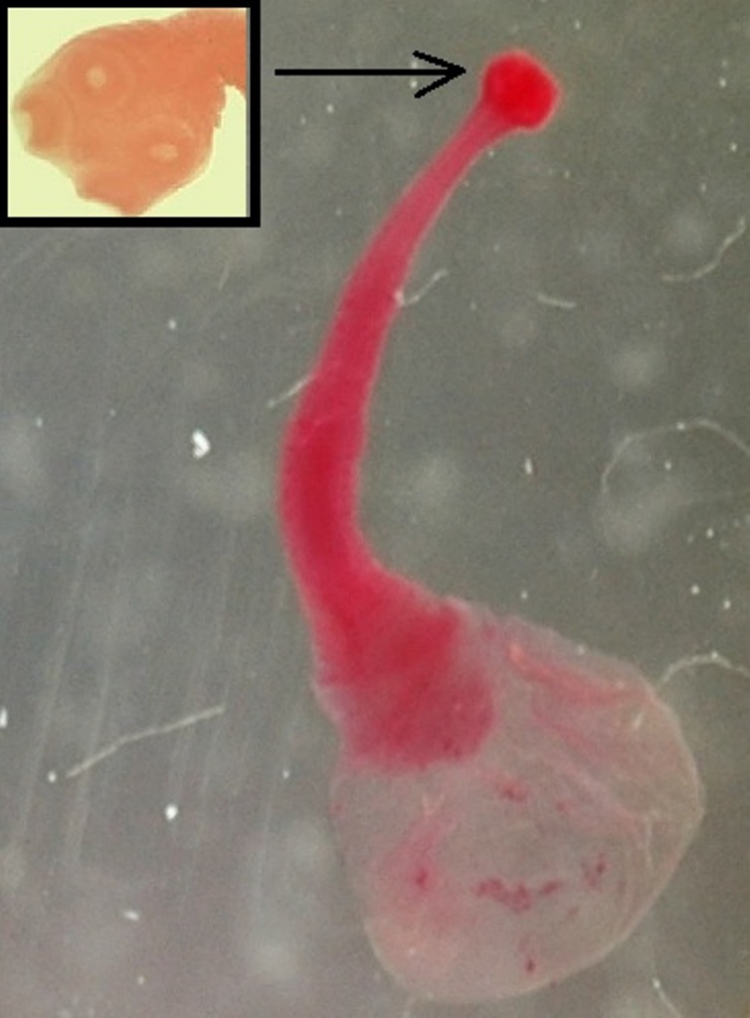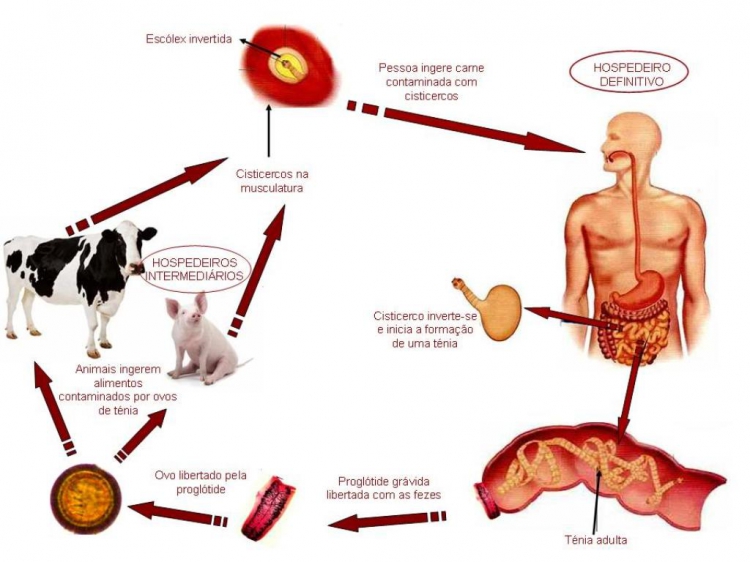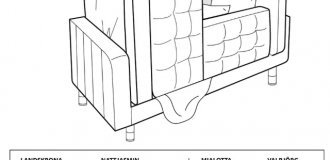Many people serve as a “home” for parasites without even knowing it. It is very easy to house them - just eat food contaminated with their larvae or not wash your hands after going outside. There are many types of human parasites, one of which is the bovine tapeworm.

Bull or naked tapeworm (lat. Taeniarhynchus saginatus or Taenia solium), (English Tapeworm)
Frankly, not the most pleasant neighborhood. After all, this is not just a small “worm” that has settled in your intestines, but a real giant, reaching a length of 4-10 meters!
Its entire body consists of a head (codex) and many small square-shaped segments, the number of which can reach 1000-2000 pieces. The segments of the posterior part of the body have an independent reproductive system and are adapted for reproduction. There are 4 suckers without hooks on the head, which is why it was called unarmed.

The bovine tapeworm has 2 hosts: the main (human) and intermediate (cattle). People who have contracted this parasite suffer from taeniarinchiasis. It is not difficult to get sick, especially in areas of intensive livestock farming. It is enough just to eat infected raw (for example, minced meat), poorly fried or dried meat containing the larvae of this parasite - cysticerci.

With teniarhynchosis, the following symptoms are observed: general weakness, nausea, dizziness, bad bowel movements, decreased appetite, irritability, insomnia, weight loss and much more in this spirit.
At first, you may not even be aware of your tenant. When it enters the gastrointestinal tract, the larva is freed from its protective shell and after some time begins to rapidly grow and divide. The worm increases in size and after 2.5-4 months it is ready to reproduce. Mature segments (proglottids) are separated from the body and, together with feces, enter the external environment.

When you begin to notice white tapeworm segments moving in your stool, or even worse, they begin to crawl out of the anus on their own, then it becomes no laughing matter. Each such “piece” carries many eggs, which they leave while actively crawling through the grass. And everything starts all over again.

Cows eat this grass. The eggs, already containing infective larvae, enter the animal's intestines and the larvae emerge from them. They drill through the intestinal walls and, once they enter the bloodstream, spread throughout the body. They most often settle in the muscles, where after a certain time they become covered with a membrane and turn into cysticerci. And then it’s up to the person.

Bovine tapeworm larva
If no measures are taken to destroy this parasite, it can live in the human intestines for up to 18-20 years! In a year, such a worm lays about 600 million eggs. And it’s scary to imagine how much he will get in his entire life.

Bull tapeworm is found almost everywhere, but most often in the countries of equatorial Africa, South America and in some countries of Eastern Europe.





















